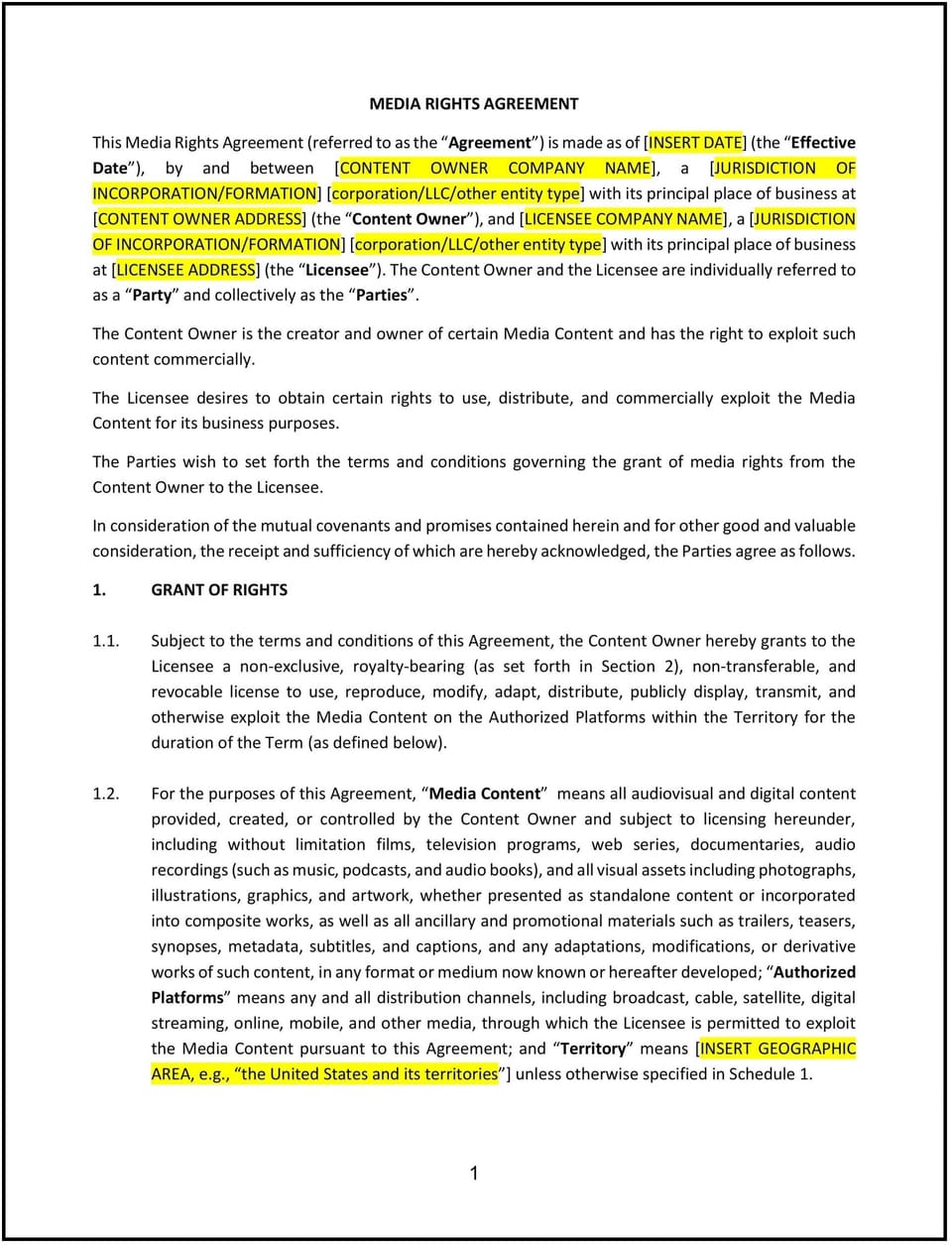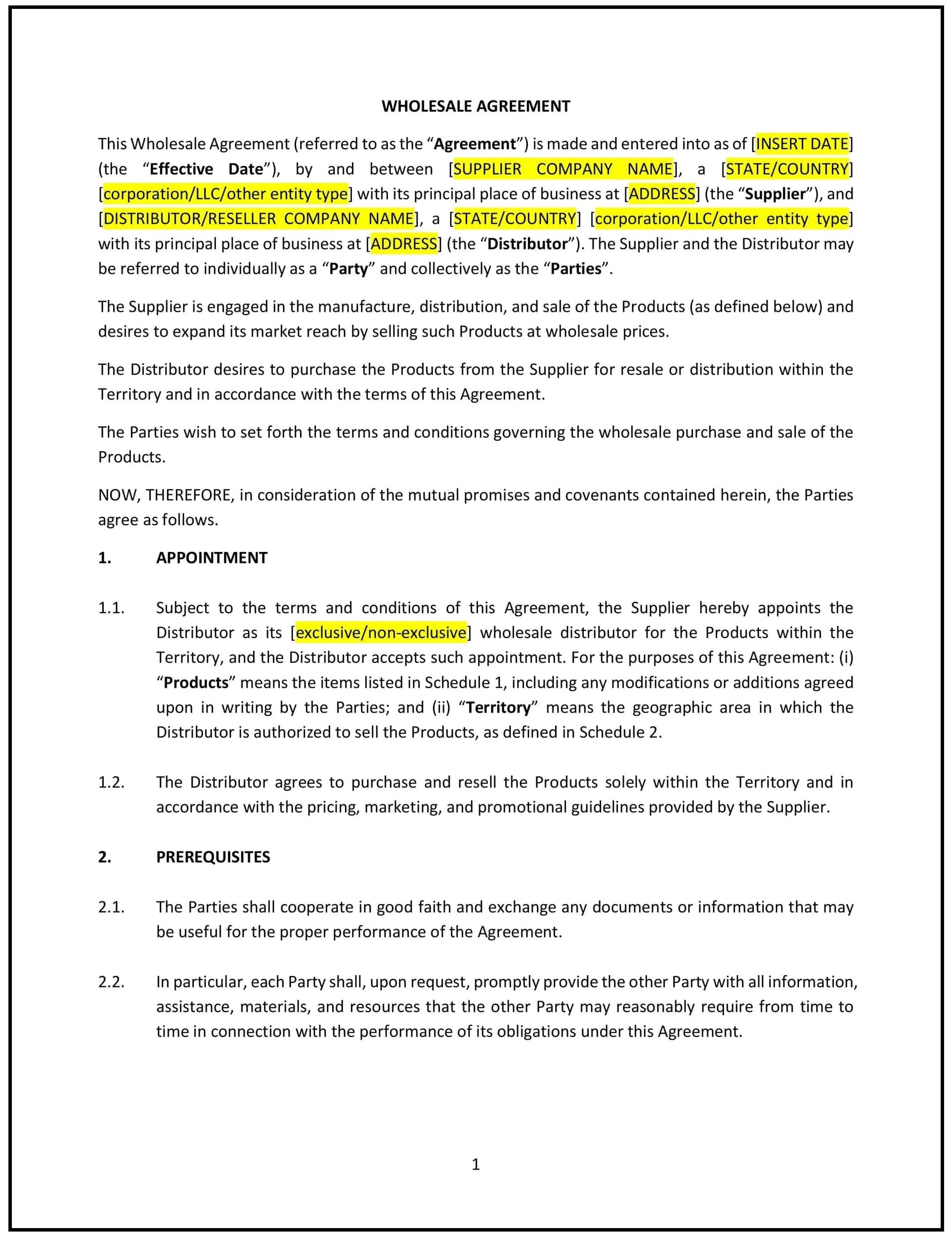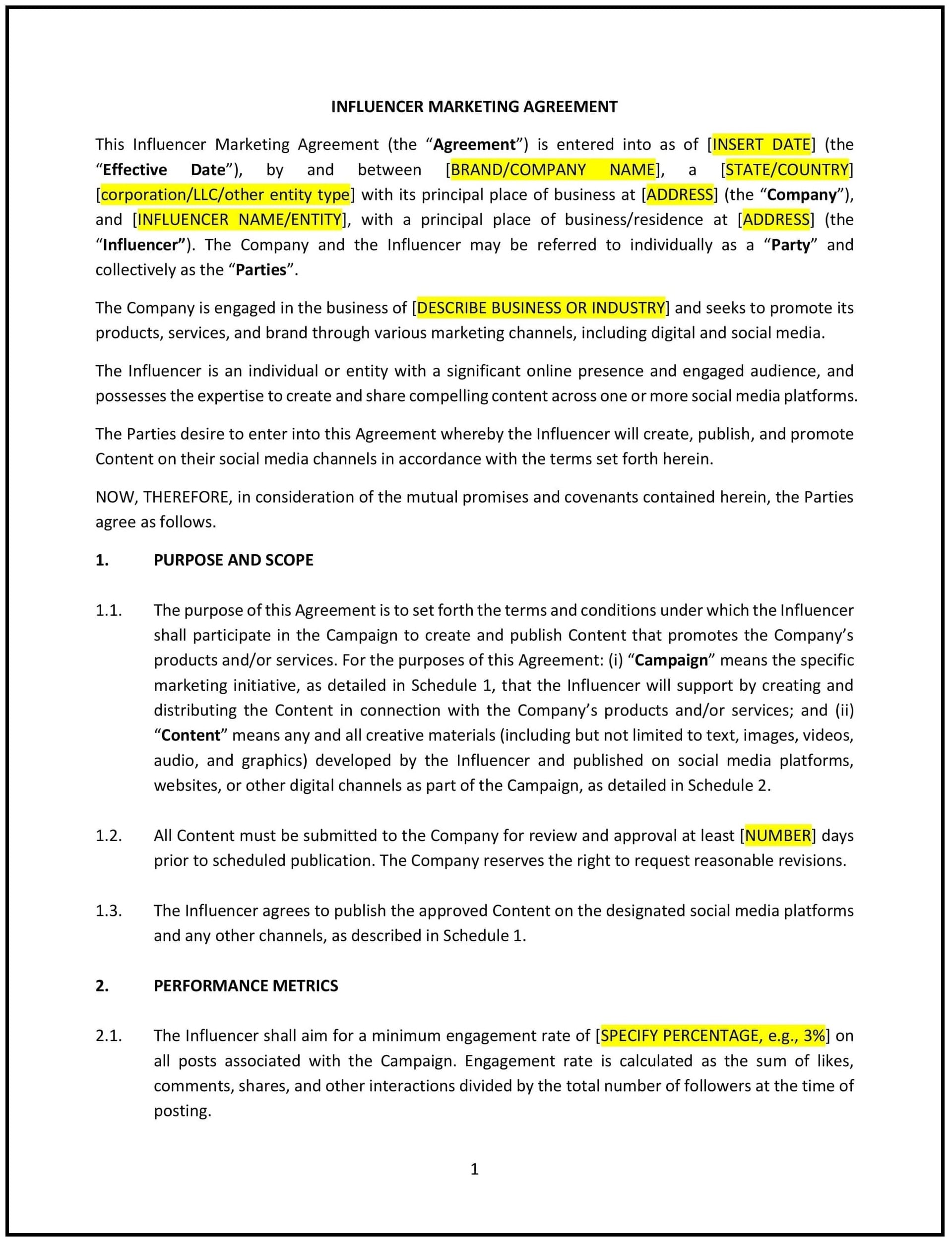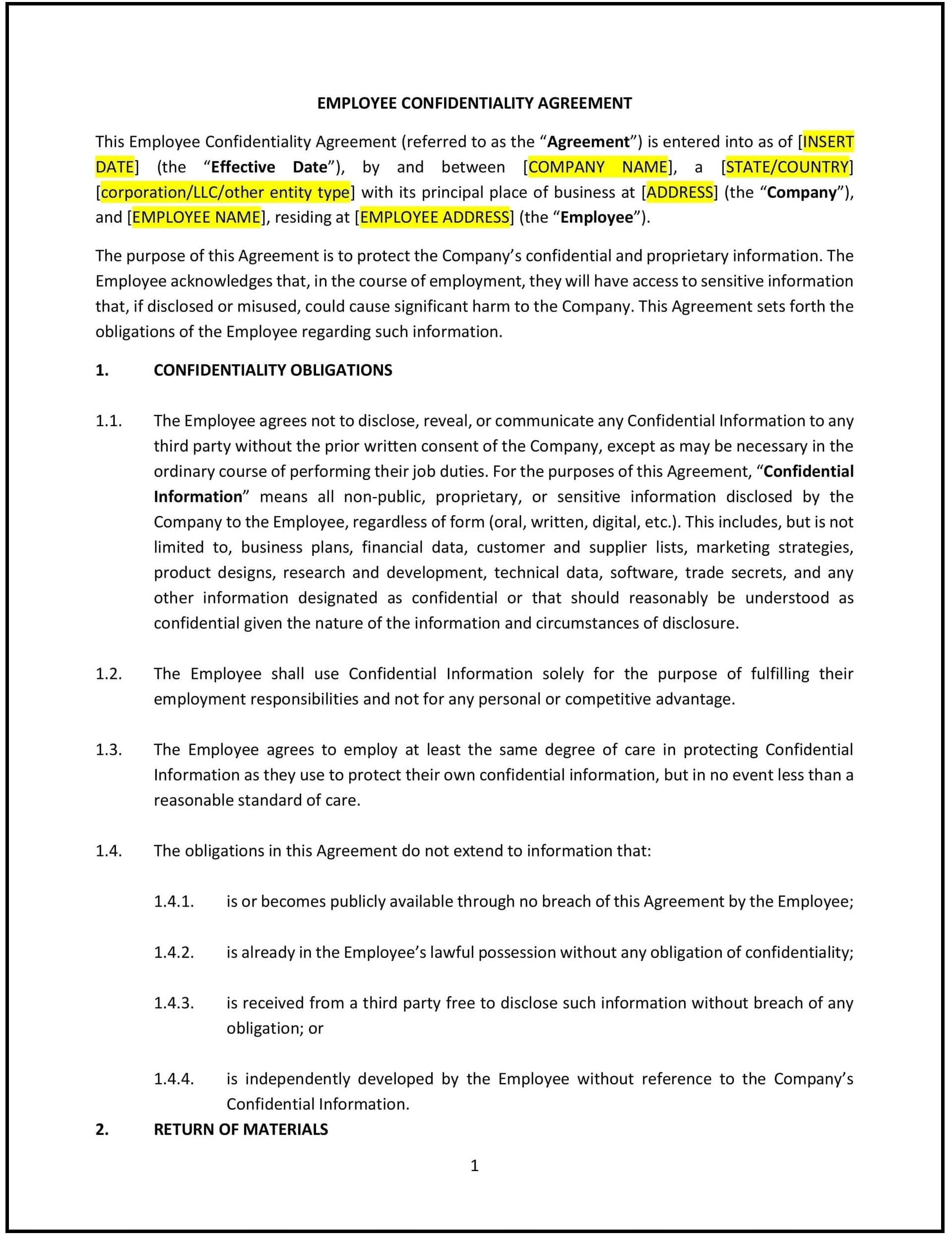Media Rights Agreement (Nebraska): Free template

Media Rights Agreement (Nebraska)
A Media Rights Agreement is a legally binding contract between two or more parties that outlines the terms and conditions under which media content (such as videos, images, audio, or written materials) can be used, distributed, or monetized. In Nebraska, Media Rights Agreements are commonly utilized in industries such as entertainment, sports, broadcasting, publishing, and digital media. These agreements provide clarity on ownership, licensing, revenue-sharing, and align with Nebraska’s legal framework.
For instance, an Omaha-based production company might use a Media Rights Agreement to formalize its collaboration with a Lincoln-based broadcaster to distribute a documentary series. A carefully drafted Media Rights Agreement promotes transparency, minimizes conflicts, and adheres to Nebraska’s contract laws and intellectual property statutes.
Tips for drafting and maintaining a Media Rights Agreement in Nebraska
- Define the scope of the agreement: Clearly outline the media content being licensed or distributed, including any limitations or exclusions. Ensure the agreement specifies each party’s roles, responsibilities, and contributions.
- Example: “The Parties agree to collaborate on the distribution of a documentary series titled ‘Cornhusker Stories’ (the ‘Content’), with Party A retaining ownership and Party B granted exclusive distribution rights within the United States.”
- Specify ownership and licensing rights: Clearly state who owns the media content and what rights are being granted to the licensee. Include details about whether the license is exclusive, non-exclusive, transferable, or time-bound.
- Example: “Party A retains full ownership of the Content. Party B is granted an exclusive, non-transferable license to distribute the Content in the United States for a period of three years.”
- Outline usage restrictions: Specify how the media content can and cannot be used. Include limitations on modifications, sublicensing, geographic regions, and platforms.
- Example: “Party B may not alter, edit, or modify the Content without prior written consent from Party A. The Content may only be distributed on streaming platforms and television networks within the United States.”
- Establish payment terms: Detail how the licensor will be compensated, whether through a flat fee, royalty payments, revenue-sharing, or other arrangements. Include payment schedules, invoicing procedures, late payment penalties, and any additional costs.
- Example: “Party B agrees to pay Party A a royalty of 15% of gross revenue generated from the distribution of the Content. Payments will be made quarterly within 30 days of the end of each calendar quarter.”
- Address reporting and auditing requirements: Specify the frequency and format of financial reports, as well as the right of the licensor to audit the licensee’s records to verify accuracy.
- Example: “Party B will provide Party A with a detailed quarterly revenue report outlining all transactions related to the Content. Party A reserves the right to conduct an annual audit of Party B’s financial records pertaining to the Content.”
- Clarify intellectual property rights: Define ownership of any intellectual property created or used during the collaboration. Specify whether intellectual property rights are shared, retained by one party, or licensed.
- Example: “All intellectual property related to the Content remains the exclusive property of Party A. Party B is granted a limited license to use the Content as outlined herein.”
- Protect confidentiality and data security: Safeguard sensitive information shared between the parties by including confidentiality clauses that align with Nebraska’s trade secret and privacy laws. Address data security measures to protect financial and operational data.
- Example: “Both parties agree to maintain the confidentiality of all proprietary information disclosed during the term of this agreement and for a period of five years thereafter. Each party will implement industry-standard encryption and access controls to safeguard shared data.”
- Set termination provisions: Define the circumstances under which the agreement can be terminated, such as breach of terms, mutual consent, or expiration of the agreement. Include steps for transitioning responsibilities if the agreement ends.
- Example: “Either party may terminate this agreement with 30 days’ written notice if the other party fails to comply with the terms outlined herein. Upon termination, all outstanding payments will be settled within 30 days.”
- Include dispute resolution mechanisms: Specify how disputes will be resolved, whether through negotiation, mediation, arbitration, or litigation. Include jurisdiction and governing law clauses to streamline the process.
- Example: “Any disputes arising under this agreement shall be resolved through binding arbitration in accordance with the rules of the American Arbitration Association. The arbitration will take place in Douglas County, Nebraska, and the decision will be final and binding.”
- Align with Nebraska-specific laws: Ensure the agreement adheres to Nebraska’s contract laws, including the Nebraska Uniform Commercial Code (UCC) for transactions involving goods. Additionally, address alignment with consumer protection statutes and intellectual property regulations.
- Example: “This agreement shall be governed by and construed in accordance with the laws of the State of Nebraska. Both parties agree to adhere to all applicable state and federal laws, including intellectual property and consumer protection regulations.”
Frequently asked questions (FAQs)
Q: Can a Media Rights Agreement be customized for Nebraska businesses?
A: Yes, a Media Rights Agreement can and should be tailored to meet the specific needs of Nebraska businesses. Customization ensures compliance with Nebraska’s contract laws, intellectual property regulations, and industry-specific requirements.
Q: What happens if one party breaches a Media Rights Agreement in Nebraska?
A: If one party breaches the agreement, the non-breaching party may seek remedies such as monetary damages, injunctive relief, or termination of the agreement, depending on the terms outlined in the contract. Including clear breach and remedy clauses can help resolve issues efficiently.
Q: How long does a Media Rights Agreement typically last in Nebraska?
A: The duration of a Media Rights Agreement depends on the terms negotiated by the parties. It can range from a few months to several years. For example, a Nebraska-based broadcaster might secure exclusive rights to distribute content for three years, after which the agreement may be renewed or renegotiated.
Q: Are there tax implications for Media Rights Agreements in Nebraska?
A: Yes, revenue generated from Media Rights Agreements may be subject to state and federal taxes. Parties should consult with a tax professional to ensure compliance with Nebraska’s tax laws and to address withholding obligations, if applicable.
Q: What role does intellectual property play in a Media Rights Agreement in Nebraska?
A: Intellectual property is central to a Media Rights Agreement, as it defines ownership of the content and the scope of rights granted to the licensee. Properly addressing intellectual property rights ensures that both parties understand their respective rights and obligations.
This article contains general legal information and does not contain legal advice. Cobrief is not a law firm or a substitute for an attorney or law firm. The law is complex and changes often. For legal advice, please ask a lawyer.


